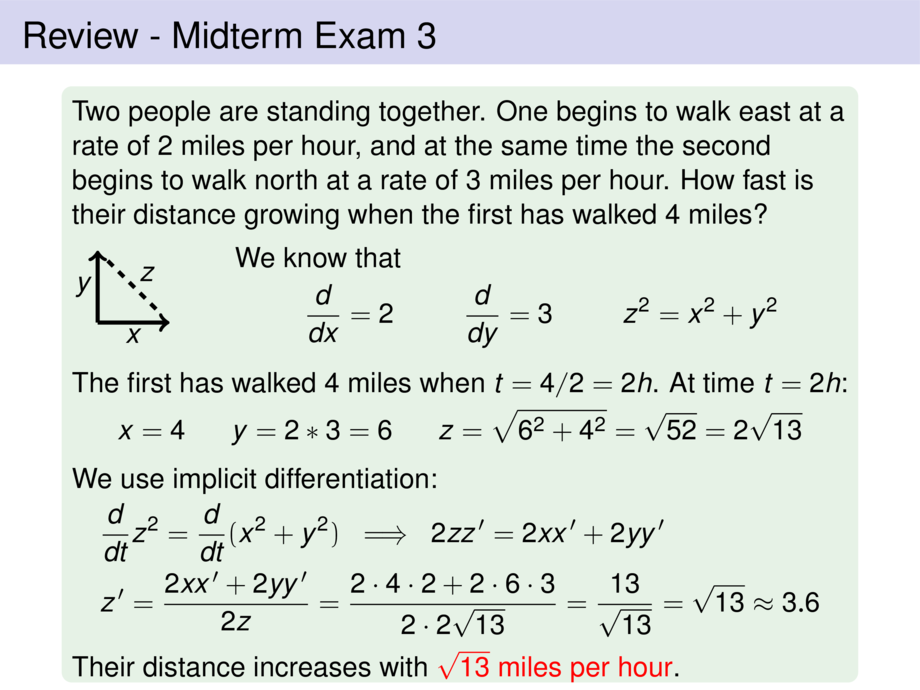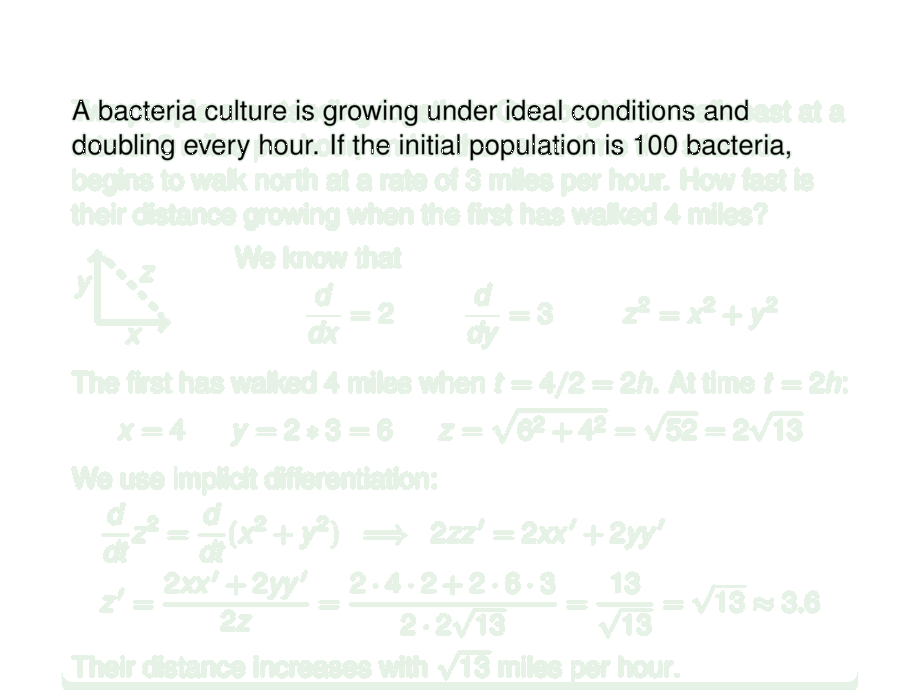



































































































22/176
\begin{frame}
\frametitle{Review - Midterm Exam 3}
\begin{exampleblock}{}
A bacteria culture is growing under ideal conditions and doubling every hour.
If the initial population is $100$ bacteria,
\pause\medskip
\emph{How many bacteria will there be after half an hour?}
\pause\smallskip
The formula for the population is of the form $P(t) = \pause 100\cdot e^{kt}$.
\pause\smallskip
Let's determine $k$. \pause After $1$h we have 200 bacteria\pause, thus\vspace{-.5ex}
\begin{talign}
200 = 100\cdot e^{k\cdot 1}
\mpause[1]{\;\implies\; 2 = e^{k}}
\mpause{\;\implies\; k = \ln 2}
\end{talign}\vspace{-2.5ex}
\pause\pause\pause
Thus $P(t) = 100\cdot e^{t\ln 2} \pause = 100\cdot 2^{t}$.
\pause
After half an hour we have $\alert{100\cdot 2^{\frac{1}{2}} \approx 141}$ bacteria.
\pause\medskip
\emph{At what rate will the population be increasing at that point?}\\
\pause\smallskip
The rate of growth is $P'(t) = 100\cdot \ln 2 \cdot 2^t$.
\\\pause
After half an hour the rate of growth is \alert{$100 \cdot \ln 2 \cdot 2^{\frac{1}{2}}$}.
\pause\medskip
\emph{When will the bacteria population reach 1000?}\vspace{-.5ex}
\pause
\begin{talign}
1000 = 100\cdot e^{t\ln 2}
\mpause[1]{ \iff 10 = e^{t\ln 2} }
\mpause{ \iff \ln 10 = t\ln 2 }
\end{talign}\vspace{-3ex}
\pause\pause\pause
Thus after \alert{$t = \ln 10 / \ln 2 \approx 3.3$} hours.
\end{exampleblock}
\end{frame}

